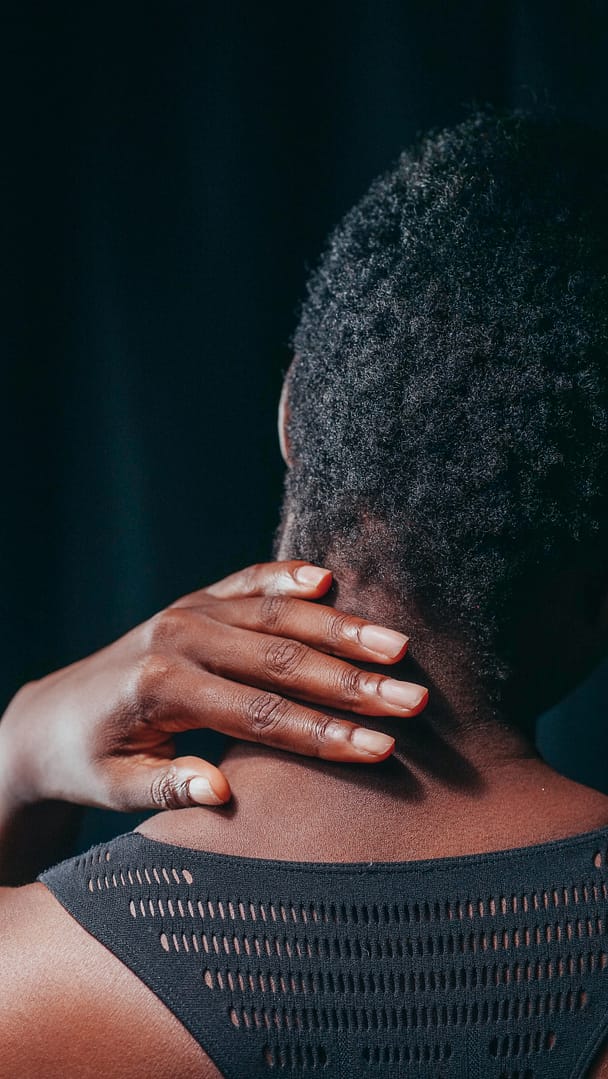


What is Neck Pain?
Neck pain refers to discomfort that occurs in the cervical region, a segment of the body comprising seven vertebrae, which allows for relative movement of the head to the body. Neck pain is a common problem. It is discomfort and difficulty with daily activities due to pain in the region between the skull and the shoulders. The neck’s intricate design facilitates three-dimensional movement of the head, acts as an anchor for muscles of the shoulder region, and protects the spinal cord, exiting nerves, and blood vessels that serve the head and brain. In certain cases, neck pain extends beyond this region, causing referred pain between the shoulder blades, down the arms, and even into the head.
The Prevalence of Neck Pain
Neck pain is a widespread issue, with nearly 70% of individuals likely to experience it at some point in their lives. The intensity of the discomfort can vary significantly, from mild irritation to severe pain that can be quite distressing and debilitating. This kind of severe neck pain can considerably disrupt daily activities, including simple tasks such as dressing, sleeping, and maintaining an active lifestyle, and can also hamper professional obligations.
Further complications may include diminished concentration, disrupted balance, and impaired function of the upper limbs. These physical repercussions can, in turn, have considerable psychological effects, impacting an individual’s overall well-being and mental health.
Neck pain is often diagnosed under various labels, including whiplash, cervicogenic headaches, degenerative disc disease, neck arthritis, disc bulges and prolapses, canal stenosis, cervical radiculopathy, and cervico-brachial pain.
Unpacking the Causes of Neck Pain
Numerous factors can contribute to neck pain, making it a rather common condition. Traumatic incidents such as sporting injuries or motor vehicle accidents can trigger acute pain, while non-traumatic causes, including sleeping poorly, and a sedentary or inactive lifestyle, can result in chronic discomfort. Neck pain can also be the result of various specific conditions like Disc Injury, Joint Sprain, Whiplash Injury, Neck Muscle Sprain/Strain, and Torticollis.
Recognising Symptoms of Neck Pain
Understanding the symptoms associated with neck pain is essential for early detection and effective treatment. These symptoms include pain that radiates into the arms or hands, limited movement or stiffness in the neck, swelling in the neck region, muscle spasms, and tension headaches. More severe cases can cause numbness, tingling, or weakness in the arms. Persistent neglect of these symptoms can be problematic.
The latest research on neck pain
The commonly held belief that incorrect posture such as sitting, standing, or bending incorrectly leads to spinal pain is challenged in a viewpoint by authors Diane Slater, Vasileios Korakakis, Peter O’Sullivan, David Nolan, and Kieran O’Sullivan. Despite the lack of strong evidence supporting these beliefs, they note that many healthcare professionals and products in the large posture industry often advise based on these non-evidence-based views. The authors emphasise the need for healthcare professionals to re-evaluate their language and advice regarding posture to avoid inducing fear and hypervigilance in patients. They stress that there is no evidence supporting the idea that correct posture prevents or reduces pain and disability. Instead, they suggest helping patients adopt more relaxed and varied postures that provide individual symptom relief and encouraging them to engage in physical activity, manage stress, and improve sleep. The authors argue for an evidence-based approach in changing the common narrative on posture.
Myths about Neck Pain:
- Neck pain is always a result of damage and wear and tear.
- Whenever you experience neck pain, a scan is always necessary.
- Poor posture causes neck pain.
- Neck pain implies that a joint is out of place.
- It’s hazardous to extend and twist your neck when it hurts.
- Activities and movements that induce neck pain should be avoided.
- Disc protrusions and spinal stenosis always necessitate surgery.
Facts about Neck Pain:
- Neck pain is infrequently caused by actual tissue damage.
- Unless there has been a significant traumatic injury or a loss of sensation and power in the arms, scans for neck pain are typically not required.
- ‘Wear and tear’, such as disc degeneration, arthritis, and disc bulges, are common even in individuals without neck pain, including young people.
- Necks don’t get out of place.
- There isn’t a single posture that can prevent or reduce neck pain.
- Neck pain is commonly caused by factors such as stress, muscle tension, neck strain, poor sleep, inactivity, and depressed mood. These factors can cause the structures of the neck to be sensitive to touch and movement.
- Learning to relax the neck and engaging in neck movement in all directions is safe and can help to alleviate neck pain.
- Addressing and managing stress, tension, mood, and sleep, as well as engaging in regular physical activity can help reduce neck pain.
- Surgery is rarely necessary for neck pain, and most disc protrusions naturally shrink over time.
How Tuggeranong Chiropractic Centre Provides Relief
Our chiropractic professionals at Tuggeranong Chiropractic Centre are well-versed in addressing your neck pain concerns. With extensive study focused on the musculoskeletal system, our chiropractors conduct a comprehensive examination, including your medical history and a physical exam, to gain an in-depth understanding of your condition. Further diagnostic tests may be recommended as necessary however they’re only required in certain cases.
Once the tests have been thoroughly reviewed, a tailored treatment and care plan is designed to meet your unique needs. The plan typically includes a combination of treatments, such as relaxation techniques for tense muscles, exercises to regain neck mobility, and a graduated strengthening program. Spinal manipulation or adjustments may also be useful especially in cases whereby the neck pain is caused by “cervicogenic causes” or tight muscles and joints in the neck. In addition, we devise a strategy to keep you physically active, helping you regain confidence and strength. These efforts contribute to alleviating pain, improving functional capacity, and promoting overall well-being.
Other strategies we incorporate in our comprehensive treatment plan include sleep improvement techniques, stress management, and guidelines for maintaining regular physical activity. At Tuggeranong Chiropractic Centre, we go beyond providing temporary relief. Instead, we aim to equip you with the knowledge to understand your pain’s origin, manage it effectively, and prevent it from recurring. Ergonomic recommendations may be required.
The duration of your treatment may vary depending on the severity and nature of your condition. While some patients may see improvements in a few sessions, others may require a more extended treatment plan over a period of months. Your response will be monitored closely.
Connect With Us Today
If you’re grappling with questions or concerns related to neck pain, or if you’re looking for a trusted chiropractic centre to manage your condition, reach out to us at Tuggeranong Chiropractic Centre. Schedule an appointment by calling us at 62921092 or booking online via our website at Tuggeranong Chiropractic Centre. Let us help you regain control and enjoy a pain-free life.
Neck Pain FAQs
We are experienced in the diagnosis and treatment of neck pain. If you have doubts or concerns about your neck and are requiring assistance feel free to consult our practice on 6292 1092.
Reference:
- “Sit Up Straight”: Time to Re-evaluate. Diane Slater, Vasileios Korakakis, Peter O’Sullivan, David Nolan, and Kieran O’SullivanJournal of Orthopaedic & Sports Physical Therapy 2019 49:8, 562-564
- Chaibi, A., Russell, M.B. Manual therapies for cervicogenic headache: a systematic review. J Headache Pain 13, 351–359 (2012). https://doi.org/10.1007/s10194-012-0436-7